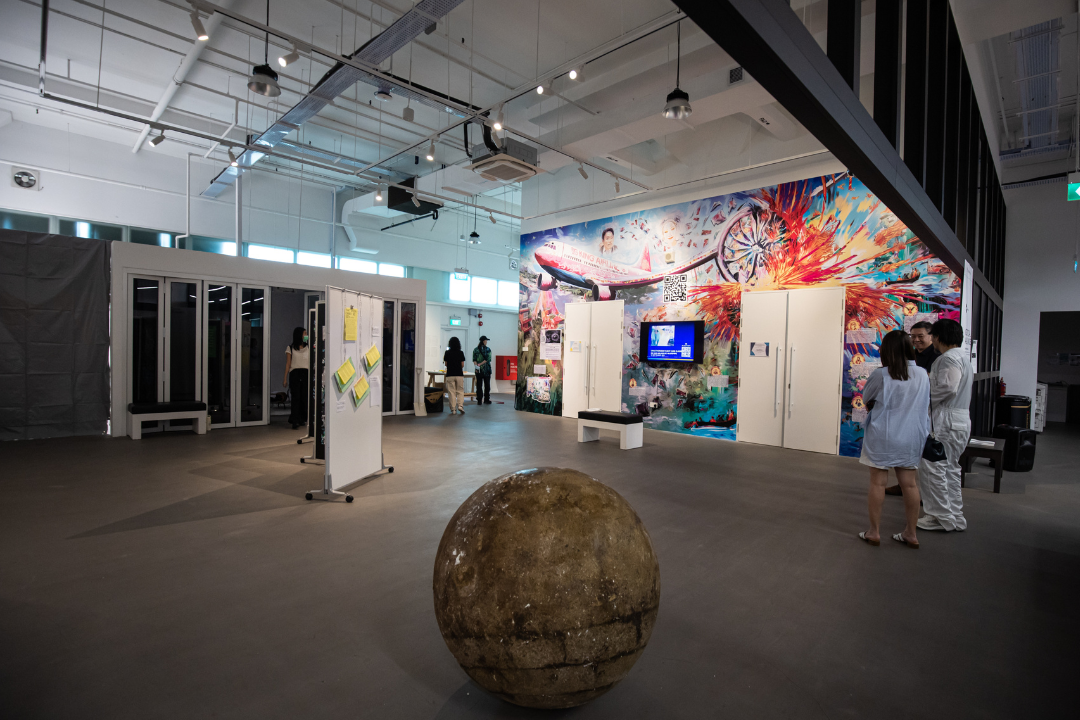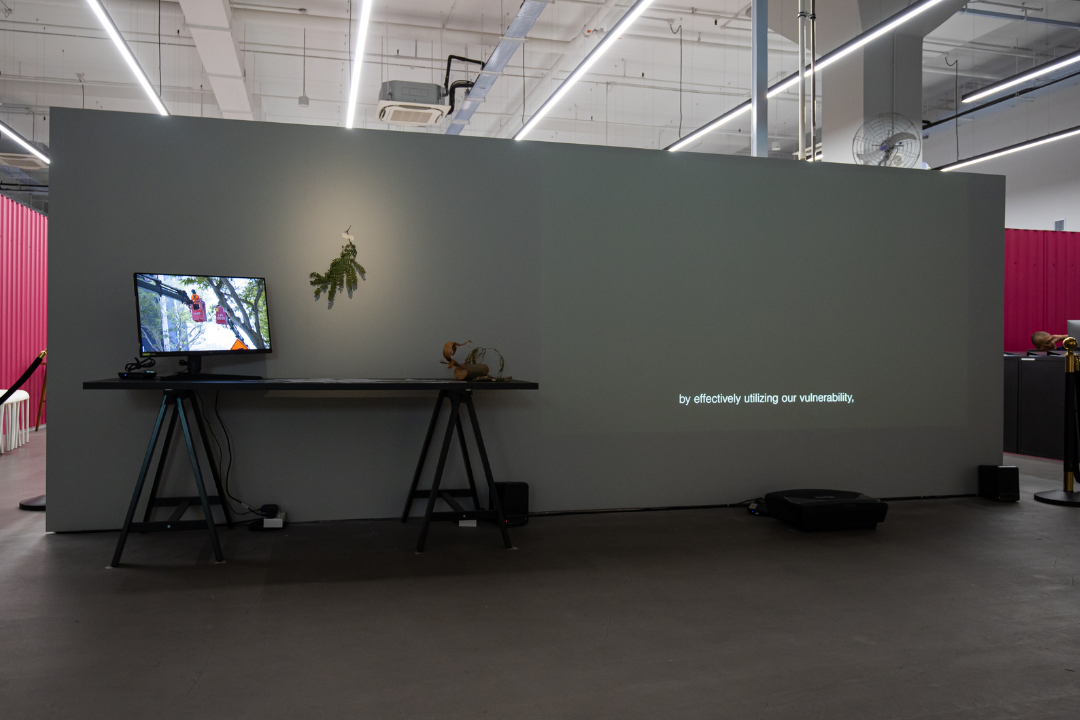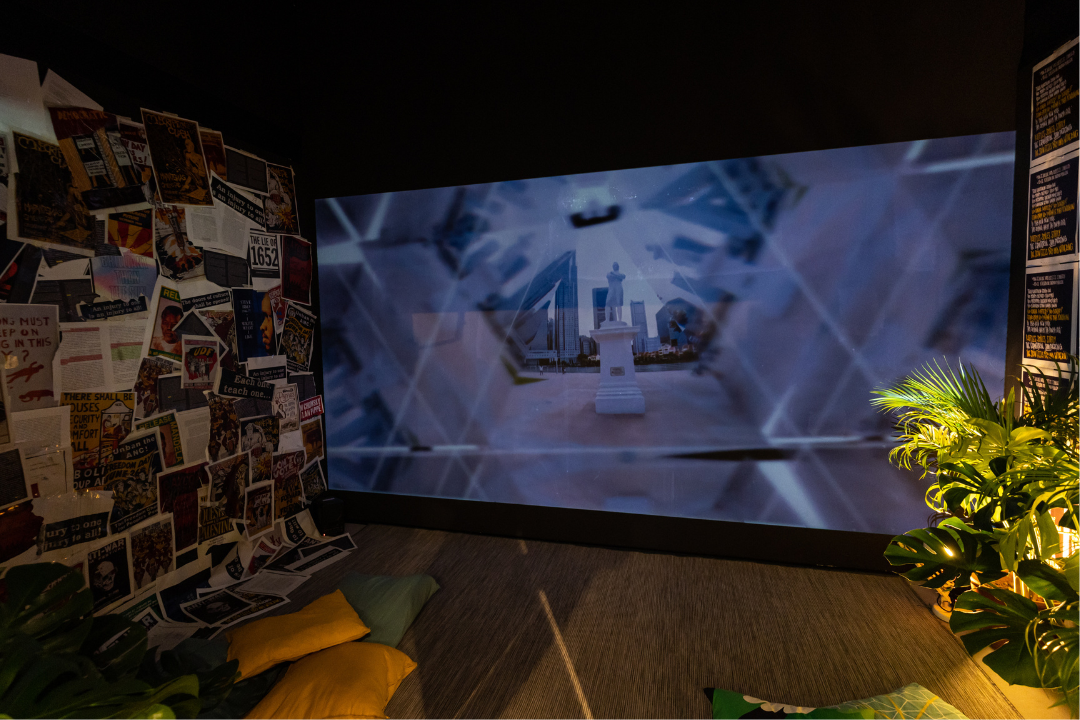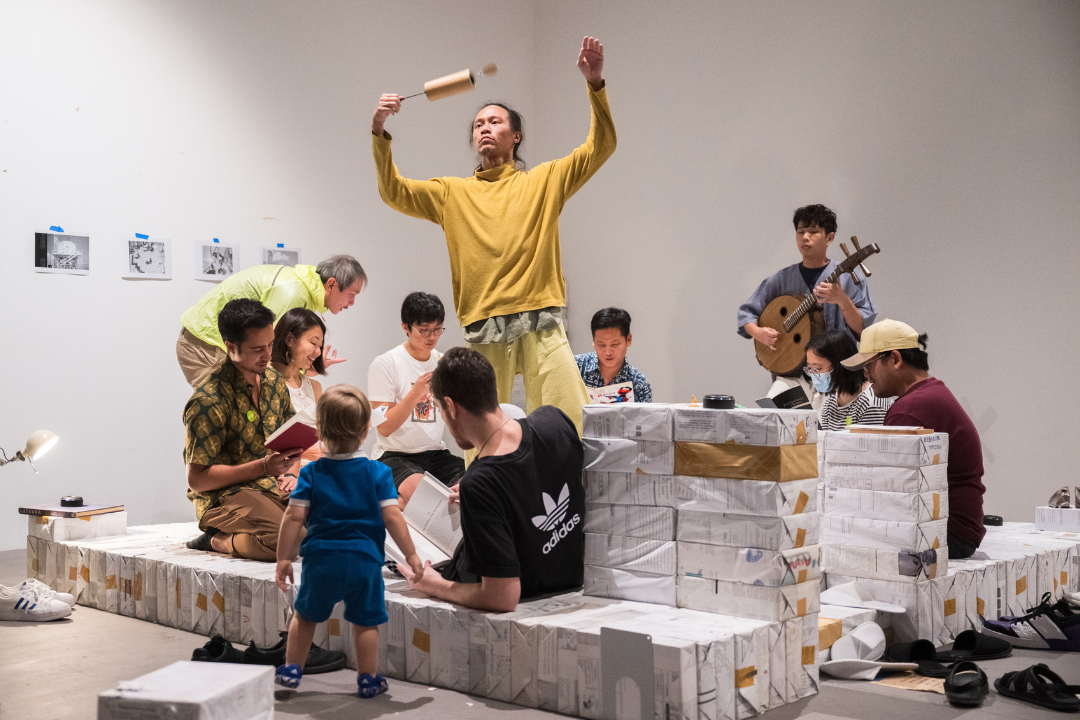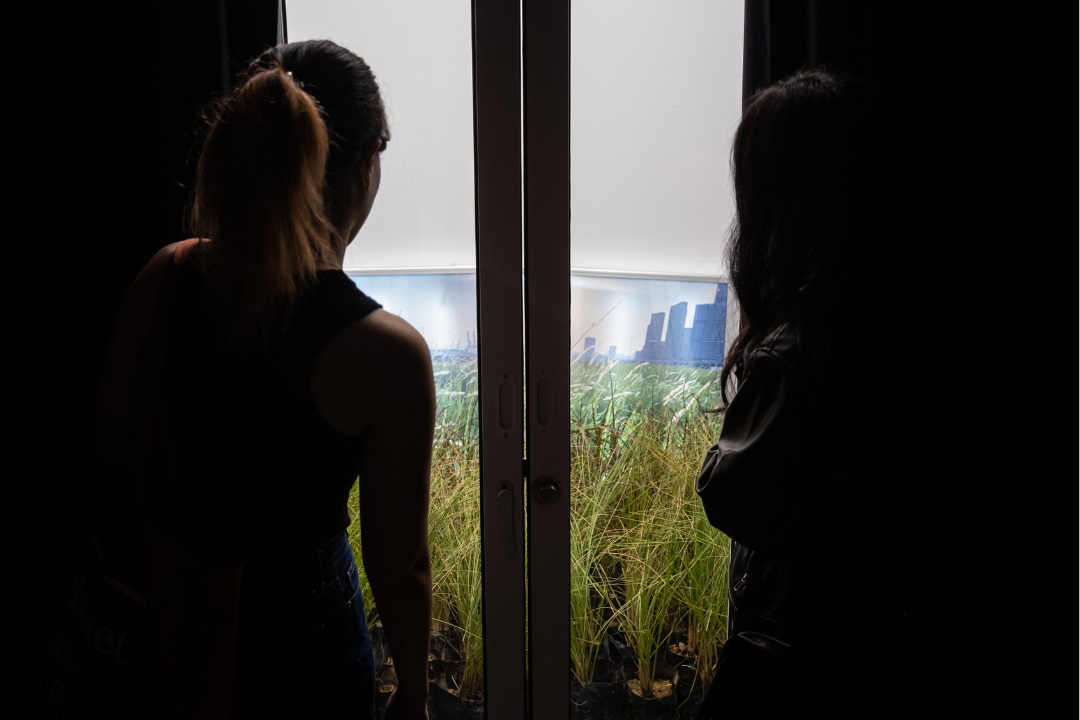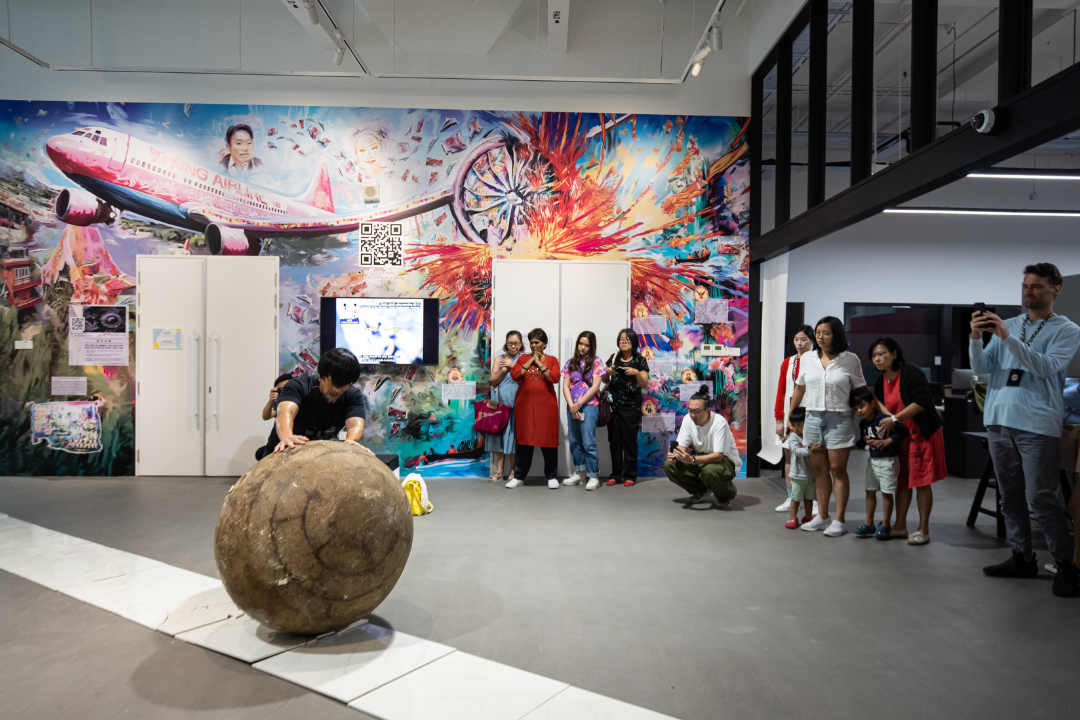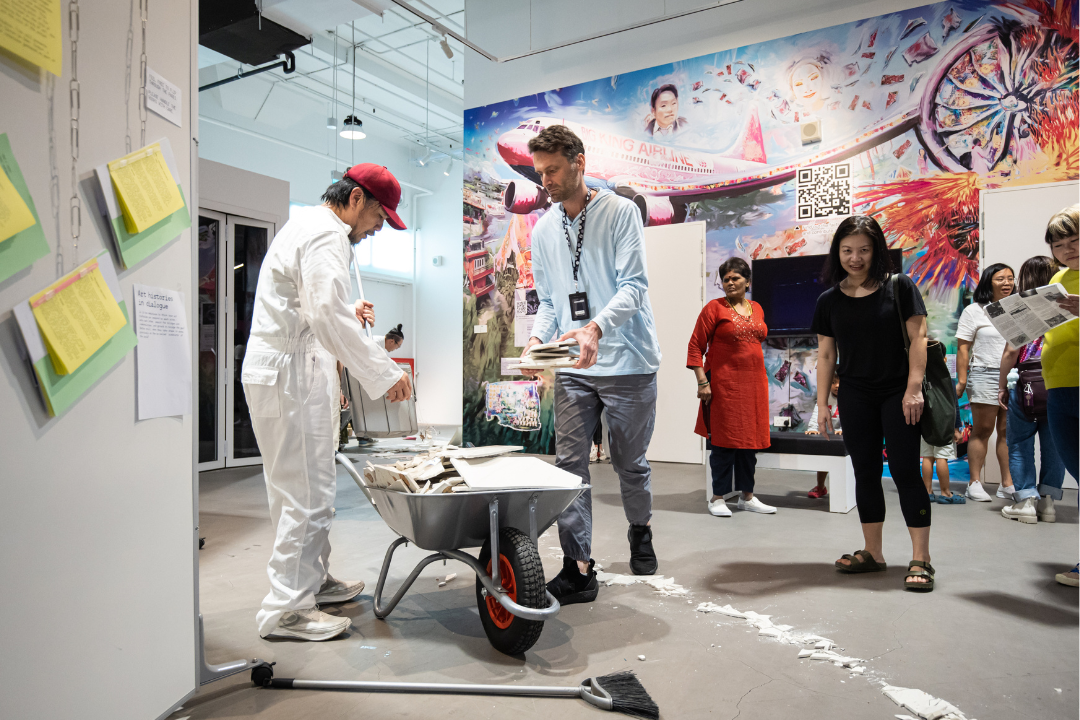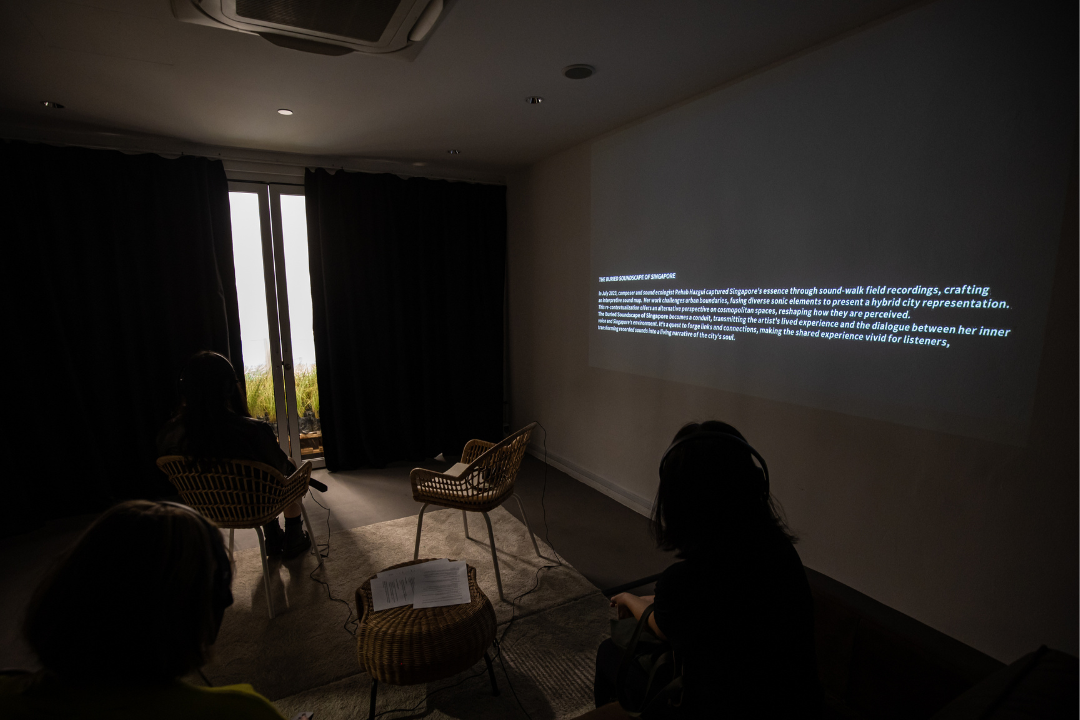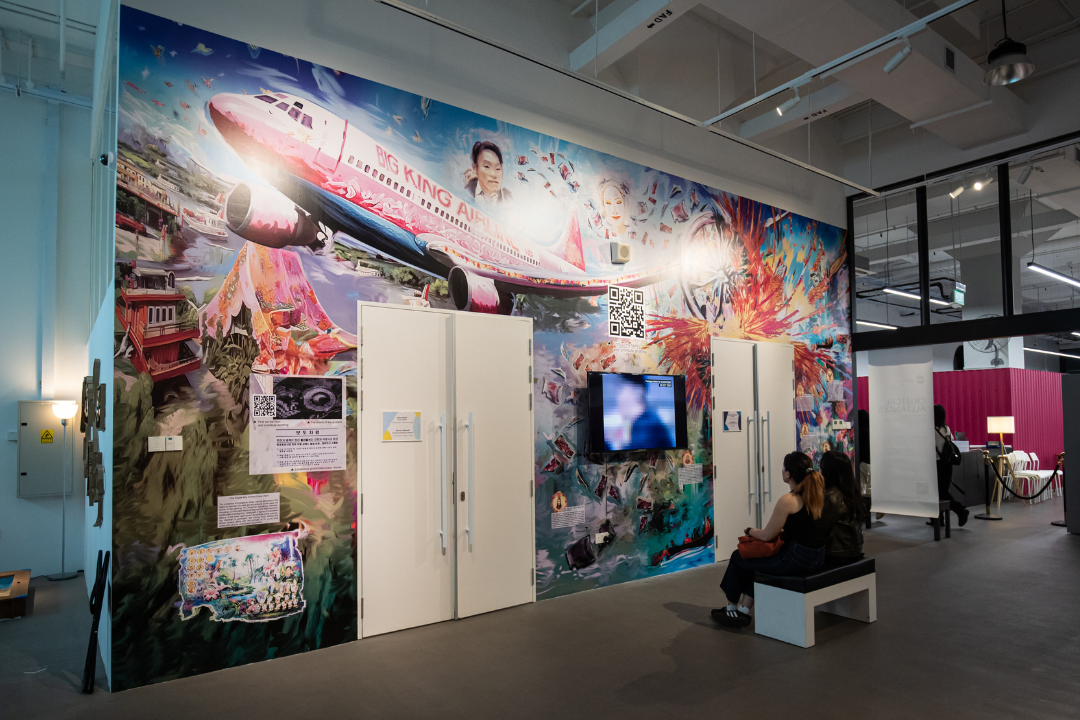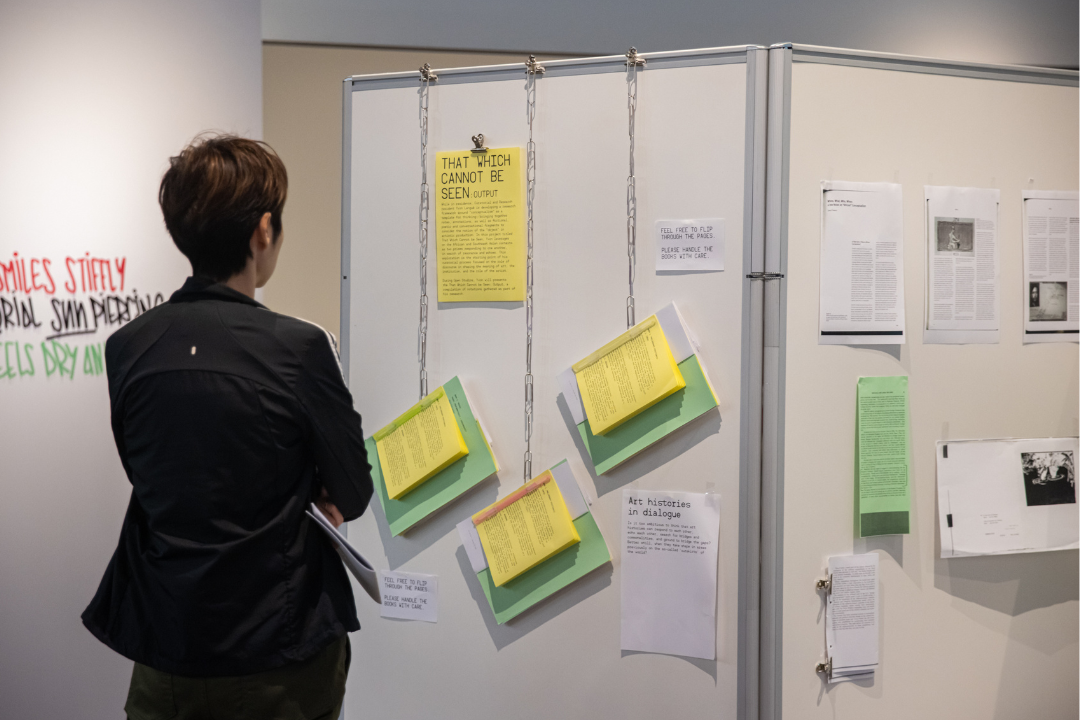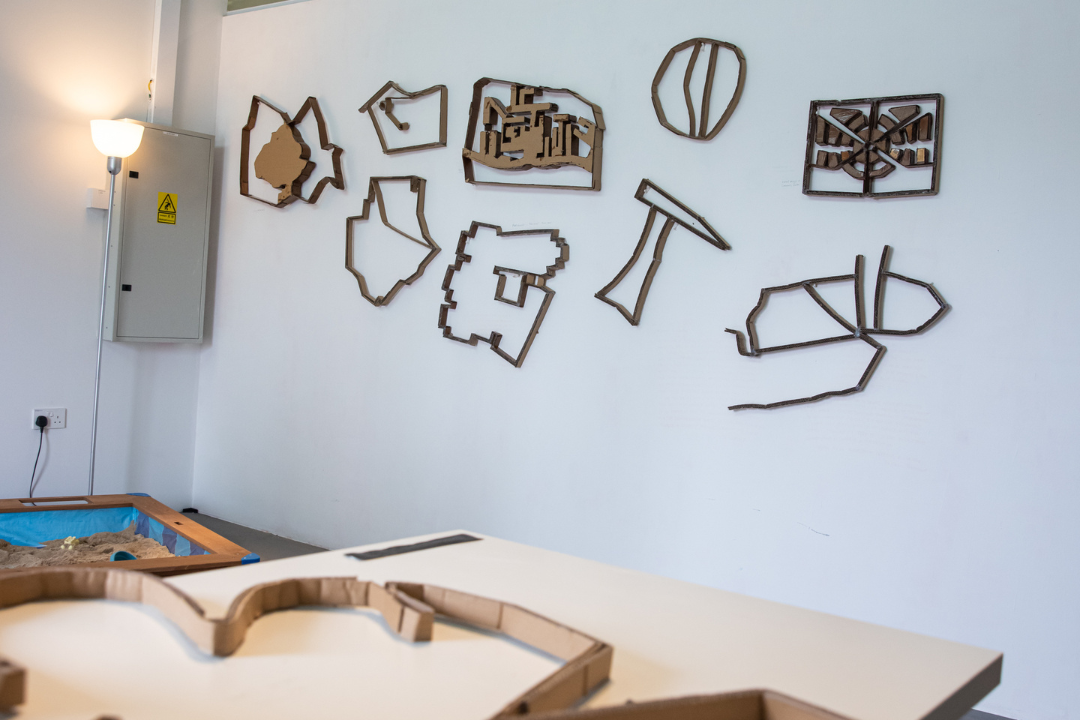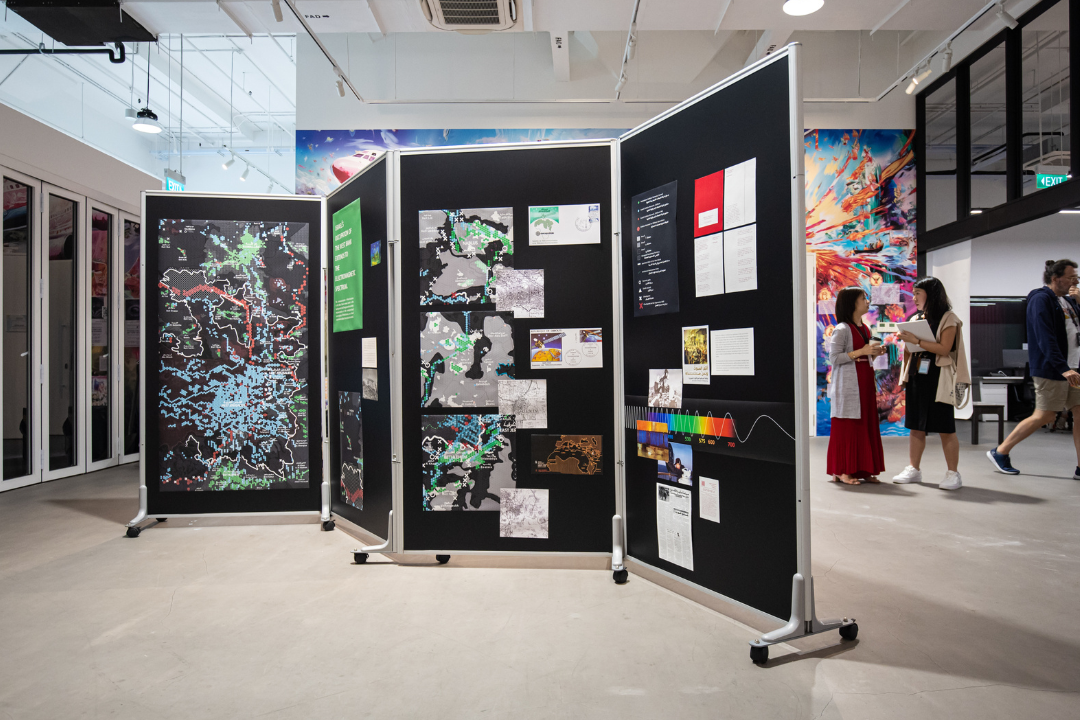An Afternoon of Conversations with SAM Residents
Critical Alliances brought together projects initiated by SAM’s resident artists, curators, and community organisers prompted by the concept anchoring the recent SAM Residencies Cycle 2: the potential of forming meaningful collaborations amongst one another and with the diverse realities of our world. Fostering connections through various methodologies and developed in conversation with SAM Residencies, each project provided an insight into studio-based methods, speculative visualisations and propositions at the forefront of contemporary practice.
These range from urban soundscape explorations and innovative approaches to activating public space, to reimagining the use of the beloved weed known as Lalang, and even experimenting with a “library” concept. Critical Alliances invites you to engage with and contribute to these dynamic inquiries.
This programme was presented as part of SAW at SAM and was open from 19th January to 26th January 2024.
Projects and Residents featured were:
Takuya Watanabe | Artist resident | Oct - Dec 2023
[Work-in-Progress in Singapore]
While in residence, [Work-in-Progress in Singapore] stemmed from Takuya Watanabe’s research into cognitive bias known as “plant blindness.” Since the vision of the “garden city” was introduced in the late 1960s, Singapore’s city planning and urban development has placed heavy emphasis on the integration and maintenance of lush greenery across the country. Takuya observed the urban greenery consisting mainly of the Rain Tree (samenea saman) not only soothes the built landscape, but it provides shade and also serves as a distinctive feature which demarcates the city. Originally from South America, the Rain Tree serve as the protagonist of [Work-in-progress in Singapore], instead exerting control over humans for its own benefit. In this narrative, Takuya turns it on its head by portraying the Rain Tree as an active agent – divulging how the trees act as invisible agents subtly influencing human movement as one travels through the city.
Adrian Van Wyk | “n Man se Ballade voor Raffles se standbeeld: 'n visual dedication aan Suratman Markasan” (“A Man’s Ballad in Front of Raffles Statue: A visual dedication to Suratman Markasan”) | Artist resident | Aug - Oct 2023
Temasik transformed to Majulah Singapura
Chests of gold and tonnes of rubber fed
The subjects of the king and queen
- Suratman Markasan
Adrian Van Wyk’s ongoing work developed while in residence examines the complexities of mythmaking within historical narratives through distortions of traumas, overshadowed narratives and mythologising as tools of coloniality.
Guided by the 1984 poem by Suratman Markasan, A Man’s Ballad in Front of Raffles Statue, Adrian offers a visual response that juxtaposes stanzas from Markasan’s poem with Raffles and his likeness to critically examine his role in Southeast Asian history. Overlaying and intertwining mundane moments—commuting, working, waiting, walking—with archival images, “n Man se Ballade voor Raffles se standbeeld: 'n visual dedication aan Suratman Markasan” carves an entry point, opening up a dialogue to rework history and honour those displaced by various colonial projects.
Chong Lingying and Winnie Li | Heterotopia Library | Community & Education resident duo | July 2023 - January 2024
Heterotopia Library is a nomadic artistic research station which first took shape when Lingying and Winnie began their residency with SAM in July 2023. It is the second iteration of the Heterotopia series, a curatorial project that explores and evolves through rhizomatic spaces. In the month of November, the Heterotopia Library emerged as a platform where all are invited to engaging its various activations– including “Make Your Own Book” workshops, the 101 to publishing “How to Publish a Book Bootcamp” series, industry chit-chats “Teahouse Talks” and also the participatory performance “Rituals to Books.” Heterotopia Library adopted a dynamic and adaptable form – transforming and shifting across a variety of activations through workshops, book launches, and conversations.
Across the SAW weekends, Heterotopia Library hosted its final slew of activations and thereafter celebrated its finale on Sunday, 28 January with a collaborative performance piece featuring Rosemainy Buang, Ng Chor Guan, Zhao Zihao and Neil Chua.
Pheng Guan Lee | Field | Artist Resident | July 2023 - January 2024
During his residency with SAM, PG Lee directed his research towards the entanglements between environmental planning and measures of urban governance. With a focus on the invasive weed Imperata Cylindrica, more commonly known as Lalang, PG, dubbed the “travelling gardener,” undertook the mission to locate and eliminate Lalang around the city’s landscape. Thereafter, experimenting to find new forms for these Lalang trimmings and cuttings. Field draws upon the collective nostalgia around Lalang when it once took over the city’s landscape even as the city was undergoing rapid urban development. This installation evokes memories of the abundant Lalang fields in Toa Payoh and Ang Mo Kio, where PG grew up in the late 1970s and 1980s. Despite Lalang’s innate nature, its image symbolizes a connection to nature and a vastness of space that, as Field seeks to remind us, has been lost to the ideals of “progress.”
The Spin (Nothing to See Here) (2024)
In a new rendition of his seminal performance piece, Sisyphus (ongoing), PG Lee pushed a 700kg ball of sand and wax around the SAM Residency Studios on a tiled path. While the ball isn't altered in this act, the process of pushing generated a new work as it simultaneously damaged the tiles in its trail. Drawing a parallel to Field, the Lalang appears to be unchanged albeit fabricated and controlled.
At the end of the trail, viewers were invited to participate in performance by becoming apart of the clean up crew.
Rehab Hazgui | The Buried Soundscape of Singapore | Artist resident | July - August 2023, January 2024
Through innovative use of computational algorithms and field recordings, Rehab Hazgui developed The Buried Soundscape of Singapore, an “interpretative sound map” challenging urban boundaries by recontextualising and reconstituting sonic elements from various places in Singapore. By creating a hybridised representation of the city with sound samples collected during her residency, Rehab offers an alternative perspective on cosmopolitan spaces and reshapes how they are perceived. The Buried Soundscape of Singapore serves as a conduit, transmitting Rehab's lived experience and the dialogue between her inner voice alongside Singapore's environment. It is a quest to forge links and connections between places by transforming recorded sounds into a living narrative of the city’s inner consciousness.
Sungsil Ryu | Big King Airlines New Engine Fundraising Drive (2023) | Artist resident | July - September 2023
Operarting within the distinct internet-kitsch aesthetic of Sungsil Ryu’s speculative universe, Big King Airlines New Engine Fundraising Drive is the latest addition to the “Big King Travel” series centered on the fictitious airline company. The primary destination of this whimsical airline is the mysterious tropical paradise of Ching Chen. Following a severe public relations crisis, the airline deploys fundraising campaigns across online platforms to save its (obviously corrupt) business from bankruptcy. In the installation featuring several QR codes directing to various webpages, Sungsil examines the intricate mechanics of online internet culture —ranging from scam tactics to memes often used as a marketing device to connect with consumers.
Yvon Langué | That Which Cannot be Seen | Curatorial and Research resident | November 2023
That Which Cannot be Seen is the physical manifestation of Yvon Langué’s in-progress research framework around “conceptualism” as a template for thinking, which took its initial shape while in residence last November. Centred on the emergence of conceptual art globally which privileges the ideas and urgencies of the art, Yvon brought together notes, annotations, as well as fictional, poetic and conversational fragments as an entry point to consider the notion of the “object” in artistic production, and in a way, examining the role of the curator as an archivist. That Which Cannot be Seen leveraged on the African and Southeast Asian contexts as two prisms responding to one another in search of resonance and echoes. As part of this research framework, conversations with artists and curators in Singapore manifested into reading lists, parts of a fictional script, and new tracks of research to be re-visited in the future.
Nilanjan Das | City As Play | Artist resident | October – December 2023
City As Play was developed from Nilanjan’s exploration into placemaking and its greater impact while in Singapore, to consider notions of gathering and play in public spaces with the
complexities of land ownership and demarcations. Through fieldwork, City as Play encompasses his observations on urban public spaces and its various facets – including public housing complexes, privately-owned public areas, and land reclamation projects – as way to assess the impacts of purpose-built spaces across Singapore on the mental psyche. One of Nilanjan’s key site was East Coast Park. Over the course of his residency, he invited participants to respond to the prompts: What does your favourite public space look like? What does this public space mean to you? In City As Play, we invite you to also respond and create your own public space!
Jumanah Abbas | Mapping Memories of Resistance |Curatorial and Research resident | October – November 2023
Jumanah Abbas’s research interests reside in mapping the sonic landscape and invisible infrastructures of the West Bank – giving light to the fractured cities of soundwaves, frequencies, and cloud data systems which sustain the necessities of a smart city. Through her work as a curator, Jumanah investigates the politics of the electromagnetic spectrum and its agency in the making of sonic spaces. During her residency, Jumanah Abbas expanded her research on the mediated history of smart cities; examining them through a curatorial lens. With Singapore's vantage as a smart city, Jumanah surveyed the electromagnetic spectrum as a spatial instrument to deploy critical, counter, and radical cartographic approaches towards visualising the invisible and vibrant apparatus of the urban environment.



